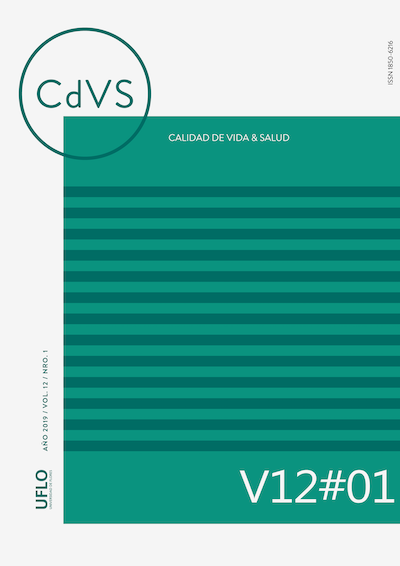Desarrollo Motor y su Influencia en el Proceso Lectoescritor en Estudiantes de 6 años
Keywords:
neuropsychology, basic patterns of movement, laterality, reading, writing, academic performance.Abstract
From the neuropsychology of education we present a descriptive and correlational study, whose purpose is to know the level of motor maturity and its relationship with the learning process of reading and writing in children with six years of age. A non-random sample of twenty students, characterized as being mostly of gypsy ethnicity, has been applied to basic patterns of movement, laterality and observation guides for reading and writing, and academic performance has been taken into account. regarding the students' grades. The results obtained show a significant relationship between the variables studied, motor maturity and the reading and writing process, this relationship being significant for the subtest of errors in reading. Given this positive relationship, a motor intervention program has been designed. The most important conclusions of the study show at a general level a low level of motor development and its relationship with the acquisition process of reading and writing in six-year-old students.
References
Ajuriaguerra, J. (1980). La escritura del niño. Barcelona: Lai.
Bisquerra, R. & Hernández, S. (2017). Psicología positiva, educación emocional y el programa aulas felices. Papeles del Psicólogo/ Psychologist Papers, 38(1), 58-65 https://doi.org/10.23923/pap.psicol2017.2822
Coste, J. C. (1979). Las 50 palabras claves de psicomotricidad. Barcelona: Médica y Técnica
Cuetos, F. (1988). Lectura y escritura de palabras a través de la ruta fonológica. Infancia y Aprendizaje. 45, 71-84
Cuetos, F. (2008). Psicología de la lectura. Madrid: Wolters Kluwer.
Escribá, A. (1999). Psicomotricidad: Fundamentos teóricos aplicables a la práctica. Madrid: Himnos.
Fernández, F. & García, J. (1996): Juego y psicomotricidad. Madrid. CEPE.
Ferré, J. & Aribau E. (2002). El desarrollo funcional del niño y sus trastornos. Barcelona: Lebón.
García Vidal, J. (1989). Manual para la confección de programas de desarrollo individual, tomo II. Madrid: EOS.
Gómez Tolón, J. (1982). Rehabilitación en los trastornos de aprendizaje. Barcelona: Escuela Española.
Hernández, M. & Alcaraz, M. (Noviembre, 2017). Aproximación conceptual del abandono escolar. En J. A. Lera Mejía, II Congreso sobre Desigualdad Social, Económica y Educativa en el Siglo XXI Noviembre 2017 (541-554). Universidad Tamaulipas. Recuperado de http://www.eumed.net/libros-gratis/actas/2017/desigualdad/
Jiménez, C. (2010). El gateo. México: Trillas
Martín Lobo, M. P. (2014). La lectura: Procesos neuropsicológicos del aprendizaje, dificultades, programas de intervención y estudio de casos. Barcelona: Lebón.
Martín, M. P., García, C., Rodríguez, I. & Vallejo, C, (2002). Test de lateralidad de las pruebas neuropsicológicas. Instituto de neuropsicología y educación. Fomento: Madrid.
Rigal, R. (1987). La lateralidad. Motricidad Humana. Madrid: Augusto E. Pila Teleña.
Rigal, R. (2006). Educación motriz y educación psicomotriz en Preescolar y Primaria. Barcelona: INDE Publicaciones
Rodríguez, M. T., Gómez, I., Prieto-Ayuso, A. & Gil-Madrona, P. (2017). La educación psicomotriz en su contribución al desarrollo del lenguaje en niños que presentan necesidades específicas de apoyo educativo. Revista de Investigación en Logopedia (1), 89-106
Ruiz, B. Gómez, M., Fernández, R. & Badía, M. (2017). Influencia de la calidad de vida, la participación y la resiliencia en el desarrollo de alumnos de educación primaria. Revista Española de Discapacidad, 5(2), 111-128. Doi: <https://doi.org/10.5569/2340-5104.05.02.06>
Santiuste, V., Ayala, C., & Martín, M. (2005). Bases neuropsicológicas del fracaso escolar. Madrid: Fugaz
Shaywitz, S. E. (2003). Overcoming dyslexia: A new and complete science-based program for reading problems at any level. Knopf.
Vayer, P. (1977). El diálogo corporal. Barcelona. Ed: Científico-Médica.
Zuppardo L., Rodríguez Fuentes, A., & Serrano F. (2017). Modelo piloto de estudio del tratamiento rehabilitador de autoestima y comportamiento en adolescentes con dislexia y disortografía mediante su mejora lectoescritora. Propósitos y Representaciones, 5(2), 359-400. doi: http://dx.doi. org/10.20511/pyr2017.v5n2.174.
Published
How to Cite
Issue
Section
The authors who publish in this journal accept the following conditions:
1. The authors retain the copyright and assign to the journal the right to first publication, with the work registered under the Creative Commons Attribution license, which allows third parties to use what has been published as long as they mention the authorship of the work and the first publication in this journal.
2. Authors may make other independent and additional contractual agreements for non-exclusive distribution of the version of the article published in this journal (e.g., inclusion in an institutional repository or publication in a book) provided that they clearly indicate that the work was first published in this journal.
3. Authors are permitted and encouraged to publish their work on the Internet (e.g., on institutional or personal pages) before and during the review and publication process, as this may lead to productive exchanges and greater and faster dissemination of published work (see The Effect of Open Access).









